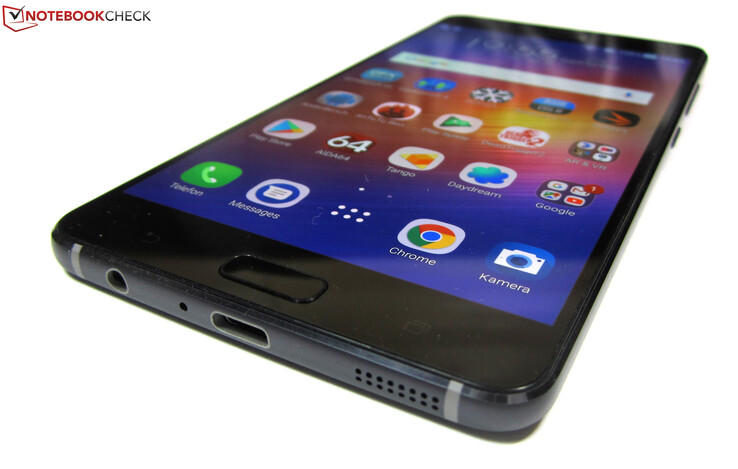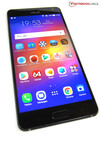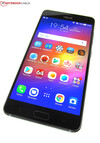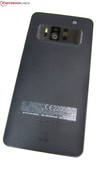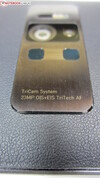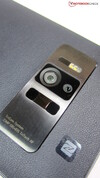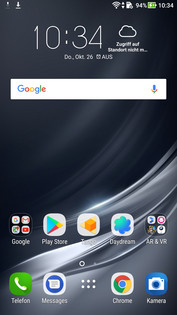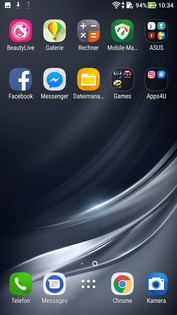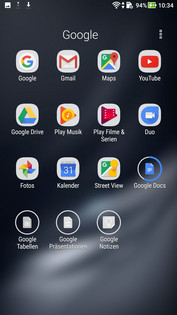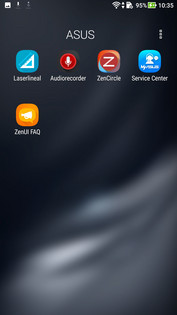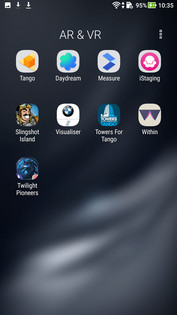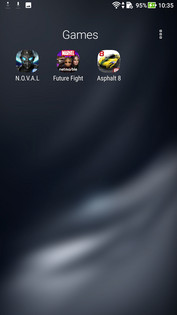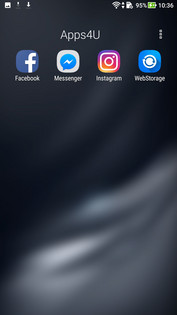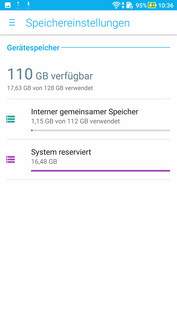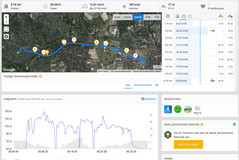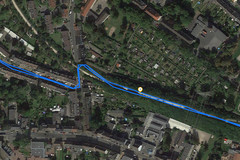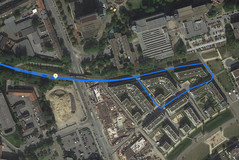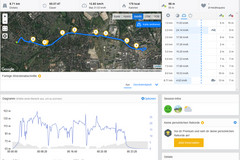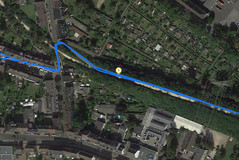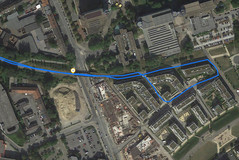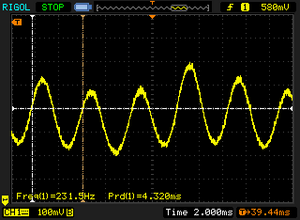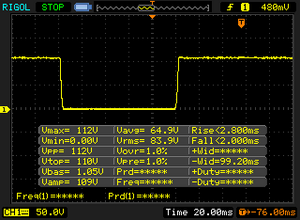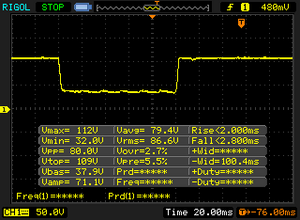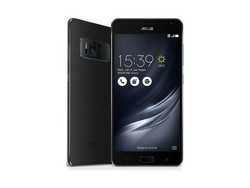Breve Análise do Smartphone Asus ZenFone AR (ZS571KL)
Os Top 10
» Os Top 10 Portáteis Multimídia
» Os Top 10 Portáteis de Jogos
» Os Top 10 Portáteis Leves para Jogos
» Os Top 10 Portáteis Acessíveis de Escritório/Empresariais
» Os Top 10 Portáteis Premium de Escritório/Empresariais
» Os Top 10 dos Portáteis Workstation
» Os Top 10 Subportáteis
» Os Top 10 Ultrabooks
» Os Top 10 Conversíveis
» Os Top 10 Tablets
» Os Top 10 Smartphones
» A melhores Telas de Portáteis Analisadas Pela Notebookcheck
» Top 10 dos portáteis abaixo dos 500 Euros da Notebookcheck
» Top 10 dos Portáteis abaixo dos 300 Euros
Size Comparison
| Networking | |
| iperf3 transmit AX12 | |
| Samsung Galaxy S8 | |
| OnePlus 5 | |
| Apple iPhone 8 | |
| Asus ZenFone AR ZS571KL | |
| Lenovo Phab 2 Pro | |
| LG G6 | |
| iperf3 receive AX12 | |
| Apple iPhone 8 | |
| OnePlus 5 | |
| Asus ZenFone AR ZS571KL | |
| Samsung Galaxy S8 | |
| LG G6 | |
| Lenovo Phab 2 Pro | |
| |||||||||||||||||||||||||
iluminação: 90 %
iluminação com acumulador: 338 cd/m²
Contraste: ∞:1 (Preto: 0 cd/m²)
ΔE ColorChecker Calman: 3.7 | ∀{0.5-29.43 Ø4.78}
ΔE Greyscale Calman: 4.9 | ∀{0.09-98 Ø5}
Gamma: 2.25
CCT: 7286 K
| Asus ZenFone AR ZS571KL Super AMOLED, 2560x1440, 5.7" | Lenovo Phab 2 Pro IPS, 2560x1440, 6.4" | Apple iPhone 8 IPS True Tone, 1334x750, 4.7" | LG G6 IPS LCD, 2880x1440, 5.7" | Samsung Galaxy S8 Super AMOLED, 2960x1440, 5.8" | OnePlus 5 AMOLED, 1920x1080, 5.5" | |
|---|---|---|---|---|---|---|
| Screen | -18% | 59% | 20% | 39% | 38% | |
| Brightness middle (cd/m²) | 338 | 472.4 40% | 604 79% | 646 91% | 566 67% | 426 26% |
| Brightness (cd/m²) | 341 | 479 40% | 580 70% | 611 79% | 564 65% | 431 26% |
| Brightness Distribution (%) | 90 | 93 3% | 91 1% | 89 -1% | 94 4% | 93 3% |
| Black Level * (cd/m²) | 0.482 | 0.44 | 0.23 | |||
| Colorchecker dE 2000 * | 3.7 | 7 -89% | 1.2 68% | 4.5 -22% | 2.7 27% | 1.6 57% |
| Colorchecker dE 2000 max. * | 7.9 | 11 -39% | 2.3 71% | 8.3 -5% | 5.4 32% | 4.1 48% |
| Greyscale dE 2000 * | 4.9 | 7.9 -61% | 1.6 67% | 6 -22% | 3.1 37% | 1.7 65% |
| Gamma | 2.25 98% | 2.34 94% | 2.25 98% | 2.27 97% | 2.15 102% | 2.25 98% |
| CCT | 7286 89% | 7826 83% | 6688 97% | 7996 81% | 6335 103% | 6329 103% |
| Contrast (:1) | 980 | 1373 | 2809 | |||
| Color Space (Percent of AdobeRGB 1998) (%) | 67.74 | 81.57 | ||||
| Color Space (Percent of sRGB) (%) | 99.05 | 99.87 |
* ... menor é melhor
Cintilação da tela / PWM (modulação por largura de pulso)
| Tela tremeluzindo/PWM detectado | 231.5 Hz | ||
A luz de fundo da tela pisca em 231.5 Hz (pior caso, por exemplo, utilizando PWM) . A frequência de 231.5 Hz é relativamente baixa, portanto, usuários sensíveis provavelmente notarão cintilação e sentirão fadiga ocular na configuração de brilho indicada e abaixo. [pwm_comparison] Em comparação: 53 % de todos os dispositivos testados não usam PWM para escurecer a tela. Se PWM foi detectado, uma média de 8118 (mínimo: 5 - máximo: 343500) Hz foi medida. | |||
Exibir tempos de resposta
| ↔ Tempo de resposta preto para branco | ||
|---|---|---|
| 4.8 ms ... ascensão ↗ e queda ↘ combinadas | ↗ 2.8 ms ascensão | |
| ↘ 2 ms queda | ||
| A tela mostra taxas de resposta muito rápidas em nossos testes e deve ser muito adequada para jogos em ritmo acelerado. Em comparação, todos os dispositivos testados variam de 0.1 (mínimo) a 240 (máximo) ms. » 16 % de todos os dispositivos são melhores. Isso significa que o tempo de resposta medido é melhor que a média de todos os dispositivos testados (20.2 ms). | ||
| ↔ Tempo de resposta 50% cinza a 80% cinza | ||
| 4.8 ms ... ascensão ↗ e queda ↘ combinadas | ↗ 2 ms ascensão | |
| ↘ 2.8 ms queda | ||
| A tela mostra taxas de resposta muito rápidas em nossos testes e deve ser muito adequada para jogos em ritmo acelerado. Em comparação, todos os dispositivos testados variam de 0.165 (mínimo) a 636 (máximo) ms. » 15 % de todos os dispositivos são melhores. Isso significa que o tempo de resposta medido é melhor que a média de todos os dispositivos testados (31.6 ms). | ||
| AnTuTu v6 - Total Score (classificar por valor) | |
| Asus ZenFone AR ZS571KL | |
| Lenovo Phab 2 Pro | |
| Apple iPhone 8 | |
| LG G6 | |
| Samsung Galaxy S8 | |
| OnePlus 5 | |
| PCMark for Android | |
| Work performance score (classificar por valor) | |
| Asus ZenFone AR ZS571KL | |
| LG G6 | |
| Samsung Galaxy S8 | |
| OnePlus 5 | |
| Work 2.0 performance score (classificar por valor) | |
| Asus ZenFone AR ZS571KL | |
| LG G6 | |
| Samsung Galaxy S8 | |
| OnePlus 5 | |
| Geekbench 4.4 | |
| 64 Bit Single-Core Score (classificar por valor) | |
| Asus ZenFone AR ZS571KL | |
| Apple iPhone 8 | |
| LG G6 | |
| Samsung Galaxy S8 | |
| OnePlus 5 | |
| 64 Bit Multi-Core Score (classificar por valor) | |
| Asus ZenFone AR ZS571KL | |
| Apple iPhone 8 | |
| LG G6 | |
| Samsung Galaxy S8 | |
| OnePlus 5 | |
| Compute RenderScript Score (classificar por valor) | |
| LG G6 | |
| Samsung Galaxy S8 | |
| OnePlus 5 | |
| GFXBench (DX / GLBenchmark) 2.7 | |
| T-Rex Onscreen (classificar por valor) | |
| Asus ZenFone AR ZS571KL | |
| Lenovo Phab 2 Pro | |
| Apple iPhone 8 | |
| LG G6 | |
| Samsung Galaxy S8 | |
| OnePlus 5 | |
| 1920x1080 T-Rex Offscreen (classificar por valor) | |
| Asus ZenFone AR ZS571KL | |
| Lenovo Phab 2 Pro | |
| Apple iPhone 8 | |
| LG G6 | |
| Samsung Galaxy S8 | |
| OnePlus 5 | |
| GFXBench 3.0 | |
| on screen Manhattan Onscreen OGL (classificar por valor) | |
| Asus ZenFone AR ZS571KL | |
| Lenovo Phab 2 Pro | |
| Apple iPhone 8 | |
| LG G6 | |
| Samsung Galaxy S8 | |
| OnePlus 5 | |
| 1920x1080 1080p Manhattan Offscreen (classificar por valor) | |
| Asus ZenFone AR ZS571KL | |
| Lenovo Phab 2 Pro | |
| Apple iPhone 8 | |
| LG G6 | |
| Samsung Galaxy S8 | |
| OnePlus 5 | |
| GFXBench 3.1 | |
| on screen Manhattan ES 3.1 Onscreen (classificar por valor) | |
| Asus ZenFone AR ZS571KL | |
| Lenovo Phab 2 Pro | |
| Apple iPhone 8 | |
| LG G6 | |
| Samsung Galaxy S8 | |
| OnePlus 5 | |
| 1920x1080 Manhattan ES 3.1 Offscreen (classificar por valor) | |
| Asus ZenFone AR ZS571KL | |
| Lenovo Phab 2 Pro | |
| Apple iPhone 8 | |
| LG G6 | |
| Samsung Galaxy S8 | |
| OnePlus 5 | |
| GFXBench | |
| on screen Car Chase Onscreen (classificar por valor) | |
| Asus ZenFone AR ZS571KL | |
| Lenovo Phab 2 Pro | |
| LG G6 | |
| Samsung Galaxy S8 | |
| OnePlus 5 | |
| 1920x1080 Car Chase Offscreen (classificar por valor) | |
| Asus ZenFone AR ZS571KL | |
| Lenovo Phab 2 Pro | |
| LG G6 | |
| Samsung Galaxy S8 | |
| OnePlus 5 | |
| JetStream 1.1 - Total Score | |
| Apple iPhone 8 | |
| OnePlus 5 (Chrome 59) | |
| Samsung Galaxy S8 (Samsung Browser 5.2) | |
| Asus ZenFone AR ZS571KL (Chrome 58.0.3029.83) | |
| LG G6 (Chrome 57) | |
| Lenovo Phab 2 Pro (Chrome 54.0.2840.85) | |
| Octane V2 - Total Score | |
| Apple iPhone 8 | |
| Samsung Galaxy S8 (Samsung Browser 5.2) | |
| OnePlus 5 (Chrome 59) | |
| Asus ZenFone AR ZS571KL (Chrome 58.0.3029.83) | |
| LG G6 (Chrome 57) | |
| Lenovo Phab 2 Pro (Chrome 54.0.2840.85) | |
| Mozilla Kraken 1.1 - Total | |
| Lenovo Phab 2 Pro (Chrome 54.0.2840.85) | |
| OnePlus 5 (Chrome 59) | |
| LG G6 (Chrome 57) | |
| Asus ZenFone AR ZS571KL (Chrome 58.0.3029.83) | |
| Samsung Galaxy S8 (Samsung Browser 5.2) | |
| Apple iPhone 8 | |
| WebXPRT 2015 - Overall | |
| Apple iPhone 8 | |
| Samsung Galaxy S8 (Samsung Browser 5.2) | |
| OnePlus 5 (Chrome 59) | |
| Asus ZenFone AR ZS571KL (Chrome 58.0.3029.83) | |
| LG G6 (Chrome 57) | |
| Lenovo Phab 2 Pro | |
* ... menor é melhor
| Asus ZenFone AR ZS571KL | Lenovo Phab 2 Pro | LG G6 | Samsung Galaxy S8 | OnePlus 5 | |
|---|---|---|---|---|---|
| AndroBench 3-5 | -22% | -2% | 21% | 52% | |
| Sequential Read 256KB (MB/s) | 458.9 | 255 -44% | 428.7 -7% | 793 73% | 748 63% |
| Sequential Write 256KB (MB/s) | 142.8 | 138 -3% | 122.8 -14% | 193.2 35% | 201.5 41% |
| Random Read 4KB (MB/s) | 88.4 | 38.53 -56% | 95.2 8% | 127.2 44% | 141 60% |
| Random Write 4KB (MB/s) | 13.51 | 12.92 -4% | 16.58 23% | 15.25 13% | 19.3 43% |
| Sequential Read 256KB SDCard (MB/s) | 83.4 ? | 71.9 ? -14% | 77.6 ? -7% | 63.9 ? -23% | |
| Sequential Write 256KB SDCard (MB/s) | 62.6 ? | 54.8 ? -12% | 53.3 ? -15% | 53.5 ? -15% |
| Dead Trigger 2 | |||
| Configurações | Valor | ||
| high | 56 fps | ||
| Asphalt 8: Airborne | |||
| Configurações | Valor | ||
| high | 30 fps | ||
| very low | 30 fps | ||
(+) A temperatura máxima no lado superior é 37.8 °C / 100 F, em comparação com a média de 35.2 °C / 95 F , variando de 21.9 a 247 °C para a classe Smartphone.
(+) A parte inferior aquece até um máximo de 37.9 °C / 100 F, em comparação com a média de 34 °C / 93 F
(+) Em uso inativo, a temperatura média para o lado superior é 25.8 °C / 78 F, em comparação com a média do dispositivo de 32.9 °C / ### class_avg_f### F.
Asus ZenFone AR ZS571KL análise de áudio
(+) | os alto-falantes podem tocar relativamente alto (###valor### dB)
Graves 100 - 315Hz
(-) | quase nenhum baixo - em média 24.7% menor que a mediana
(±) | a linearidade dos graves é média (9.8% delta para a frequência anterior)
Médios 400 - 2.000 Hz
(+) | médios equilibrados - apenas 3.6% longe da mediana
(+) | médios são lineares (4.2% delta para frequência anterior)
Altos 2 - 16 kHz
(±) | máximos mais altos - em média 8.6% maior que a mediana
(+) | os máximos são lineares (6.8% delta da frequência anterior)
Geral 100 - 16.000 Hz
(±) | a linearidade do som geral é média (21.6% diferença em relação à mediana)
Comparado com a mesma classe
» 42% de todos os dispositivos testados nesta classe foram melhores, 8% semelhantes, 50% piores
» O melhor teve um delta de 11%, a média foi 35%, o pior foi 134%
Comparado com todos os dispositivos testados
» 60% de todos os dispositivos testados foram melhores, 7% semelhantes, 33% piores
» O melhor teve um delta de 4%, a média foi 24%, o pior foi 134%
Lenovo Phab 2 Pro análise de áudio
(+) | os alto-falantes podem tocar relativamente alto (###valor### dB)
Graves 100 - 315Hz
(-) | quase nenhum baixo - em média 22.8% menor que a mediana
(±) | a linearidade dos graves é média (11.4% delta para a frequência anterior)
Médios 400 - 2.000 Hz
(+) | médios equilibrados - apenas 2.2% longe da mediana
(+) | médios são lineares (4.7% delta para frequência anterior)
Altos 2 - 16 kHz
(±) | máximos mais altos - em média 6.3% maior que a mediana
(±) | a linearidade dos máximos é média (7.3% delta para frequência anterior)
Geral 100 - 16.000 Hz
(±) | a linearidade do som geral é média (21.1% diferença em relação à mediana)
Comparado com a mesma classe
» 39% de todos os dispositivos testados nesta classe foram melhores, 8% semelhantes, 53% piores
» O melhor teve um delta de 11%, a média foi 35%, o pior foi 134%
Comparado com todos os dispositivos testados
» 57% de todos os dispositivos testados foram melhores, 7% semelhantes, 35% piores
» O melhor teve um delta de 4%, a média foi 24%, o pior foi 134%
Apple iPhone 8 análise de áudio
(±) | o volume do alto-falante é médio, mas bom (###valor### dB)
Graves 100 - 315Hz
(±) | graves reduzidos - em média 14.6% menor que a mediana
(±) | a linearidade dos graves é média (9.2% delta para a frequência anterior)
Médios 400 - 2.000 Hz
(+) | médios equilibrados - apenas 4.3% longe da mediana
(+) | médios são lineares (4.2% delta para frequência anterior)
Altos 2 - 16 kHz
(±) | máximos mais altos - em média 5.1% maior que a mediana
(+) | os máximos são lineares (4.7% delta da frequência anterior)
Geral 100 - 16.000 Hz
(±) | a linearidade do som geral é média (18.2% diferença em relação à mediana)
Comparado com a mesma classe
» 17% de todos os dispositivos testados nesta classe foram melhores, 8% semelhantes, 74% piores
» O melhor teve um delta de 11%, a média foi 35%, o pior foi 134%
Comparado com todos os dispositivos testados
» 38% de todos os dispositivos testados foram melhores, 8% semelhantes, 54% piores
» O melhor teve um delta de 4%, a média foi 24%, o pior foi 134%
| desligado | |
| Ocioso | |
| Carga |
|
Key:
min: | |
| Asus ZenFone AR ZS571KL 3300 mAh | Lenovo Phab 2 Pro 4050 mAh | Apple iPhone 8 1821 mAh | LG G6 3300 mAh | Samsung Galaxy S8 3000 mAh | OnePlus 5 3300 mAh | |
|---|---|---|---|---|---|---|
| Power Consumption | -147% | 10% | 1% | 23% | -1% | |
| Idle Minimum * (Watt) | 0.88 | 3 -241% | 0.54 39% | 0.62 30% | 0.78 11% | 0.73 17% |
| Idle Average * (Watt) | 1.24 | 4.1 -231% | 1.63 -31% | 1.43 -15% | 1.1 11% | 1.44 -16% |
| Idle Maximum * (Watt) | 1.26 | 4.2 -233% | 1.67 -33% | 1.48 -17% | 1.16 8% | 1.5 -19% |
| Load Average * (Watt) | 7.71 | 10.4 -35% | 2.74 64% | 5.52 28% | 4.15 46% | 6.91 10% |
| Load Maximum * (Watt) | 8.64 | 8.1 6% | 7.78 10% | 10.47 -21% | 5.12 41% | 8.51 2% |
* ... menor é melhor
| Asus ZenFone AR ZS571KL 3300 mAh | Lenovo Phab 2 Pro 4050 mAh | Apple iPhone 8 1821 mAh | LG G6 3300 mAh | Samsung Galaxy S8 3000 mAh | OnePlus 5 3300 mAh | |
|---|---|---|---|---|---|---|
| Duração da bateria | -8% | 11% | 28% | 29% | 7% | |
| Reader / Idle (h) | 24.6 | 18.7 -24% | 27.2 11% | 29.8 21% | 27.8 13% | 25.6 4% |
| H.264 (h) | 10.6 | 9.5 -10% | 11.6 9% | 13 23% | 12.9 22% | 10.4 -2% |
| WiFi v1.3 (h) | 7.4 | 8.5 15% | 9.8 32% | 11.5 55% | 12 62% | 8.6 16% |
| Load (h) | 3.7 | 3.2 -14% | 3.4 -8% | 4.2 14% | 4.4 19% | 4.1 11% |
Pro
Contra
Sem dúvida: o ZenFone AR é o primeiro smartphone em rodar fluentemente os aplicativos de realidade aumentada do Google Tango. No entanto, dada a seleção relativamente escassa de aplicativos (cerca de 30) - a maioria dos quais são truques para inicializar - em seu estado atual, Tango está longe de ser um recurso imprescindível. A questão é: você está disposto a gastar quase $800 mais impostos por esta experiência de RA bastante pobre? Suspeitamos que, para a maioria dos usuários, o Tango não será um fator importante ao considerar o ZenFone AR, especialmente porque os óculos Daydream de RV do Google não estão incluídos e devem ser comprados separadamente.
Comprar o ZenFone AR apenas por causa do Google Tango não vai valer a pena. Deixando a realidade aumentada de lado, o que resta é um smartphone decente, mas caro.
Com quase a metade do preço, o LG G6 é quase tão veloz quanto o ZenFone AR. Nem mesmo a TriCam da Asus foi capaz de impressionar-nos. Sim, as fotos resultantes são certamente decentes, mas estão longe de ser as melhores. Além disso, a duração da bateria é muito fraca e o ZenFone AR fica sem energia comparativamente rápido.
No final do dia, o Asus ZenFone AR é um smartphone bem feito e de alta qualidade com tela OLED WEDHD, que tem um desempenho mais que adequado para aplicativos e jogos comuns e módulos de comunicação muito rápidos.
Asus ZenFone AR ZS571KL
- 11/02/2017 v6 (old)
Manuel Masiero




